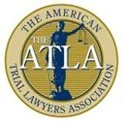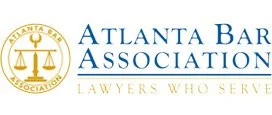Injured in a Georgia School Zone Pedestrian Accident? Here’s What to Do
Key Points:
- School Zones are established adjacent to schools to provide extra safety for vulnerable children
- The State of Georgia establishes and enforces school zone and crosswalk laws to promote pedestrian safety
- In spite of the emphasis on School Zone safety, accidents frequently happen
- Victims of school zone accidents may be eligible for compensation by filing a personal injury claim against the at-fault driver
- Proving liability and gaining full compensation for damages may be difficult and require the help of an experienced lawyer
Table of Contents
Understanding School Zones and Their Purpose
A school zone is a designated area surrounding a school where specific traffic regulations are enforced. Overall, school zones are crucial for protecting children and fostering a safe learning environment. By understanding the purpose of these special areas and obeying the regulations, everyone can contribute to a safer community for our future generations. to prioritize the safety of children and other pedestrians. There are several purposes of designated school zones:
- Reduce traffic speeds: Lower speed limits are imposed in school zones, typically ranging from 15-25 mph, compared to regular roads, to decrease the severity of potential accidents involving pedestrians.
- Heighten driver awareness: Flashing lights, signage, and bright markings alert drivers to the presence of children and emphasize caution.
- Protect students during peak times: The regulations are often active during specific times when students are entering, leaving, or crossing the street, typically in the mornings and afternoons.
- Create a safer environment for pedestrians: Crosswalks, sidewalks, and designated drop-off/pick-up zones further enhance safety for students walking or biking to and from school.
Scope of a School Zone:
The exact boundaries of a school zone can vary, but they generally encompass the roads directly bordering the school property, intersections near the school where children may cross. School zones are described by special signage including:
Advance Warning Signs are diamond-shaped with yellow background and black border. They show an image of children walking and often have the silhouette of a school building in the background. The purpose of these signs is to alert drivers as they approach a school zone.
School Speed Limit Signs are rectangular in shape with white background and red borders. They display the reduced speed limit for the school zone and are typically installed at the beginning and end of school zones.
School Crossing Signs are meant to warn drivers of potential pedestrian crossings, especially near crosswalks. They are orange in color, diamond shaped and include the silhouette of a walking child.
School Zone Ends signs indicate the end of the school zone and signal that drivers may return to regular speed limits. These signs are rectangular with a white background and black border and have either a crossed-out image of a walking child, or the text “School Zone Ends.”
In addition to the standard signage discussed above, school zones often incorporate flashing yellow lights to heighten awareness for drivers alongside school crossing signs. Pavement markings, including crosswalks, stop lines, and designated speed limits painted on the road surface, further reinforce the regulations in these areas.
Finally, school bus stop signs, marked by orange diamonds with black borders, indicate designated bus stops and mandate drivers to stop when the lights are flashing. These combined measures work together to create a safer environment for children in school zones.
Georgia Laws Regarding School Zones
Georgia Code § 40-14-18 deals with the enforcement of speed limits in school zones using recorded images and the associated civil penalties. Here's a breakdown of its key points:
Enforcement:
- Authorities can use speed cameras in school zones during school days and one hour before and after instructional classes take place.
- Cameras must capture an image of the vehicle and its license plate exceeding the speed limit by at least 10 miles per hour.
Penalties:
- Violations result in a civil monetary penalty, not a traditional traffic citation.
- The registered owner of the vehicle is responsible for the penalty regardless of who was driving.
- Failure to pay the penalty within 30 days leads to a referral to the Department of Revenue, potentially hindering vehicle registration renewal and title transfer.
Georgia Crosswalk Laws:
Georgia crosswalk laws have some key differences, although they both aim to prioritize pedestrian safety. Here's a breakdown:
- Apply at any marked or unmarked crosswalk throughout the state, not just near schools.
- Require drivers to stop and yield the right of way to pedestrians within the crosswalk regardless of whether the driver has a green light or not.
- Penalties for violating crosswalk laws typically involve fines and points on your license.
Enforcement and Penalties:
Violating school zone rules, such as ignoring speed limits, failing to yield to pedestrians, or illegally passing stopped school buses, can lead to penalties like fines, points on your license, or even imprisonment depending on the severity of the offense and whether or not the violation caused an accident.
School Zone Designations
Not all schools in Georgia are eligible for school zone designation, including private or parochial schools. Here's the breakdown:
Public Schools:
- All public schools in Georgia are eligible for school zone designation. This includes elementary, middle, and high schools.
- The Georgia Department of Transportation (GDOT) establishes the specific boundaries and regulations for each public school zone.
Private and Parochial Schools:
- Private and parochial schools are not automatically eligible for school zone designation. However, they can petition the local government for a designated school zone.
- The petition process typically involves submitting various documents, including traffic studies and safety plans, and demonstrating the need for the zone based on student enrollment, traffic patterns, and potential safety concerns.
- Local authorities, such as the city council or county commission, have the final decision on whether or not to grant the petition.
Are school zones known to have a higher chance of pedestrian accidents?
Unfortunately, school zones do have a higher chance of pedestrian accidents compared to other areas. Here are some statistics to illustrate this:
- Approximately 25,000 children are injured and around 100 are killed each year in school zone accidents, according to the Transportation Research Board.
- Five teen pedestrians are killed in school zones every week in the United States, as reported by Safe Kids Worldwide.
- The pedestrian death rate for 12- to 19-year-old has increased by 13 percent since 2013.
Several factors contribute to this increased risk:
- Presence of vulnerable pedestrians: School zones are filled with children, who are more susceptible to severe injuries due to their smaller size and developing awareness.
- Distracted driving: Drivers might be rushing to drop off or pick up children, leading to inattentiveness and potentially causing accidents. Speeding: In spite of lower speed limits in school zones, drivers often disregard them, reducing their reaction time and increasing the severity of collisions.
- Lack of proper infrastructure: Some school zones might have inadequate signage, crosswalks, or sidewalks, further compromising pedestrian safety.
Accidents Still Occur
While specific data for 2025 isn't readily available, school zone accidents continue to be a concerning reality in Georgia. Our State has strict rules for school zones, including reduced speed limits, flashing lights, and crossing guards. Yet, accidents still happen.
School zone accidents are a serious concern in Georgia, with dozens of children being struck by vehicles each year and suffering serious injuries or even death. This is due in part to the vulnerability of children, their smaller size and unpredictable behavior making them more at risk. The after-school hours between 3 PM and 7 PM see a particularly high number of child pedestrian fatalities.
When Accidents and Injuries Happen
When an accident happens within a school zone, penalties apply just as they would anywhere else. Those penalties include:
- Citations and fines: Depending on the violation, fines can range from several hundred dollars to thousands.
- Civil lawsuit: The injured pedestrian can file a civil lawsuit to recover damages for medical expenses, lost wages, pain and suffering, and other losses.
Criminal Penalties May Also be Levied
- Misdemeanor charges: For minor injuries and some traffic violations, charges like reckless driving or failure to yield to a pedestrian could result in fines, community service, or even jail time.
- Felony charges: If the accident leads to serious injuries or death, the driver could face felony charges for vehicular homicide, hit-and-run, or DUI causing serious injury or death. These charges carry significant potential prison sentences and fine
- Loss of driver's license: Depending on the severity of the offense and violations, the driver's license could be suspended or revoked.
Personal Injury Claims
When accidents happen in School Zones, victims may file legal action against the at-fault driver. It’s important to remember that even though such an accident happens in an area where stricter laws apply, such accidents are not automatically compensated at a higher rate than accidents that occur in other locations.
Compensation in personal injury cases, including those involving school zone accidents, is typically determined based on the specific details of the accident and the resulting damages, not the location. The amount of compensation you are eligible to receive will depend upon the severity of your injuries, the specific costs you incurred, and other factors. These factors can include:
- Medical Expenses: This covers all past and future costs associated with your injuries, including: Hospital stays, doctor visits and consultations, surgeries and medical procedures, medications and rehabilitation, ambulance fees and emergency care
- Lost Wages: If your injuries prevent you from working, you can claim compensation for lost income during your recovery period. This should includes wages you would have earned, commissions, bonuses, and other forms of earnings lost, and vacation time or sick leave you had to use because of your injuries
- Pain and Suffering: This covers the physical and emotional pain you experience due to the accident, including physical pain and discomfort, emotional distress, anxiety, depression and the diminishment or loss of enjoyment of life
- Property Damage: If your vehicle, bike, or other personal property was damaged in the accident, you can claim compensation for repairs or replacement.
- Other Damages: Depending on the specifics of your case, you might also be eligible for other damages, such as compensation for scarring and disfigurement, loss of consortium (loss of companionship or intimacy due to your injuries,) or, in the event of a fatality of a loved one in the accident, wrongful death.
Additionally, you must prove that the other driver was at fault for the accident to be eligible for compensation. For these reasons, consulting with a personal injury attorney familiar with Georgia laws is valuable in order for you to understand your specific rights and options regarding your claim.
Punitive Damages in Georgia School Zone Accidents
Punitive damages aim to punish the defendant for exceptionally reckless or malicious behavior in a personal injury case. They are distinct from compensatory damages, which reimburse the victim for financial losses and pain and suffering. In extreme cases with malicious intent or recklessness, punitive damages might be awarded in a civil lawsuit to punish the driver beyond compensating the victim.
While punitive damages are a possibility in school zone accident lawsuits, they are not awarded automatically and come with significant challenges. The key factor lies in proving the defendant's actions met specific legal criteria, such as acting with malice (intentionally causing harm), oppression (unreasonable disregard for the rights of others), or willful misconduct (consciously disregarding a known risk of serious harm).
Situations in which punitive damages might be levied in a school zone accident would be those involving recklessness, extreme speeding, driving under the influence of drugs or alcohol or deliberately disregarding warning signage. You should know that proving the necessary level of intent can be very difficult since judges are slow to impose these additional disciplinary measures.
Additionally, Georgia has a cap of $250,000 for punitive damages. Therefore, while they are not impossible, pursuing punitive damages in school zone accidents heavily depends on the specific circumstances and the defendant's actions, and it's crucial to remember they are not guaranteed even in severe cases.
Do Insurance Companies Settle School Zone Accidents Faster?
While definitive data on settlements specifically for school zone accidents is limited, studies suggest insurance companies generally trend towards settling most personal injury cases rather than going to court.
Since accidents involving children can evoke even stronger emotions, this can potentially make juries more sympathetic to the injured party and leading to higher awards if the case goes to trial. Insurance companies generally prefer offering settlements over going to court due to lower costs and faster resolutions compared to court cases.
The likelihood of an auto insurance company settling in a school zone accident involving a traffic violation and pedestrian injury depends on various factors. While clear evidence, severe injuries, and public perception might encourage settlement, disputed liability, minor injuries, and policy limits can make it less likely.
It’s important to remember that every case is unique, and there's no guarantee a settlement will happen, even in a school zone accident. Seeking legal advice from a personal injury attorney familiar with Georgia laws is crucial to understanding your specific case and potential settlement options.
Challenges of Pursuing a School Zone Injury Claim
While the inherent vulnerability of children in school zones might suggest an easy path to compensation following an accident, pursuing a personal injury claim in these situations can be surprisingly complex. Understanding these challenges is crucial before embarking on the potentially lengthy legal process.
Determining liability: Proving negligence in school zone accidents can be complex. While the increased presence of children elevates the duty of care for drivers, establishing the exact cause and who is responsible can be challenging, especially if multiple parties are involved. This could involve the driver, the school district (for inadequate safety measures), or even other pedestrians if their actions contributed to the accident.
Sovereign immunity: Public schools and government entities often have sovereign immunity protections, limiting their liability in certain situations. This can make it more difficult to hold them accountable and recover compensation.
Emotional toll: Accidents involving children can be emotionally taxing for everyone involved. Additionally, over and above the physical and emotional trauma of the accident, a legal claim comes with extra stress and emotional strain.
Lengthy process: Because of the nature of these claims, personal injury actions can take months or even years to resolve.This long process can be very stressful, causing financial and emotional stress for the victim.

 1201 West Peachtree Street #2339 Atlanta, GA 30309+1-770-212-3795$0-$100000
1201 West Peachtree Street #2339 Atlanta, GA 30309+1-770-212-3795$0-$100000I must say that this Law Firm was very professional. They kept me on top of everything that was going on without missing a beat. Ivory was very professional and responsive. If I had anything I needed to speak with her about she was just a phone call away but if she wasn't available she definitely returned your call. So if you are looking for a great law firm I would definitely say The Millar Law Firm would be a great choice.

Advantages of Pursuing a School Zone Injury Claim
Though navigating a personal injury claim after a school zone accident presents challenges, there can also be significant advantages.
Availability of Evidence: Because of their location and the likelihood of higher traffic at the times when accidents occur, it’s very possible that there will be more witnesses. Additionally, there are often video cameras in operation in school zones, providing visual evidence.
Potential for higher compensation: Due to the heightened duty of care in school zones and the potential for severe injuries involving children, successful claims in these situations may result in higher compensation compared to accidents in other locations. This compensation can be crucial to help cover medical expenses, lost wages, and pain and suffering.
Increased public support: School zone accidents often garner public attention and sympathy, potentially leading to increased support from the community and legal professionals who specialize in such cases.
Holding negligent parties accountable: A successful claim can hold negligent parties accountable for their actions, potentially prompting improvements in school zone safety measures to prevent future accidents.
Ultimately, while challenges exist, the potential benefits of seeking compensation and advocating for safer school zones can be compelling reasons to consider legal action.
Will the Courts be Aggressive in Protecting Children in School Zones?
It's difficult to say definitively that the courts and legal system are more aggressive in protecting children around schools. However, several factors suggest a heightened focus on their safety:
Increased Duty of Care: Courts generally recognize a higher duty of care for drivers in school zones. This means drivers are expected to be extra cautious due to the presence of vulnerable children. Violations of traffic laws in school zones, like speeding or distracted driving, can be viewed more seriously by the courts, potentially strengthening personal injury claims and leading to harsher penalties.
Focus on Safety Measures: Courts might consider the adequacy of safety measures implemented by schools and local authorities when assessing an accident. If inadequate signage, crosswalks, or sidewalks contributed to the accident, the court might hold these entities partially responsible, encouraging them to prioritize improvements.
Public Interest and Scrutiny: School zone accidents often garner significant public attention and scrutiny. This can put pressure on the legal system to thoroughly investigate and hold negligent parties accountable, potentially influencing legal proceedings and outcomes.
Potential for Higher Damages: Due to the potential for severe injuries involving children and the heightened duty of care, successful personal injury claims arising from school zone accidents may result in higher compensation compared to accidents in other locations. This can serve as a deterrent for negligent behavior and promote safer practices around schools.
School zones are meant to present a higher duty of care for drivers. Sadly, this higher standard doesn’t eliminate the possibility of accidents. When they do happen, victims will benefit from knowing the rights afforded to them by Georgia’s laws.















